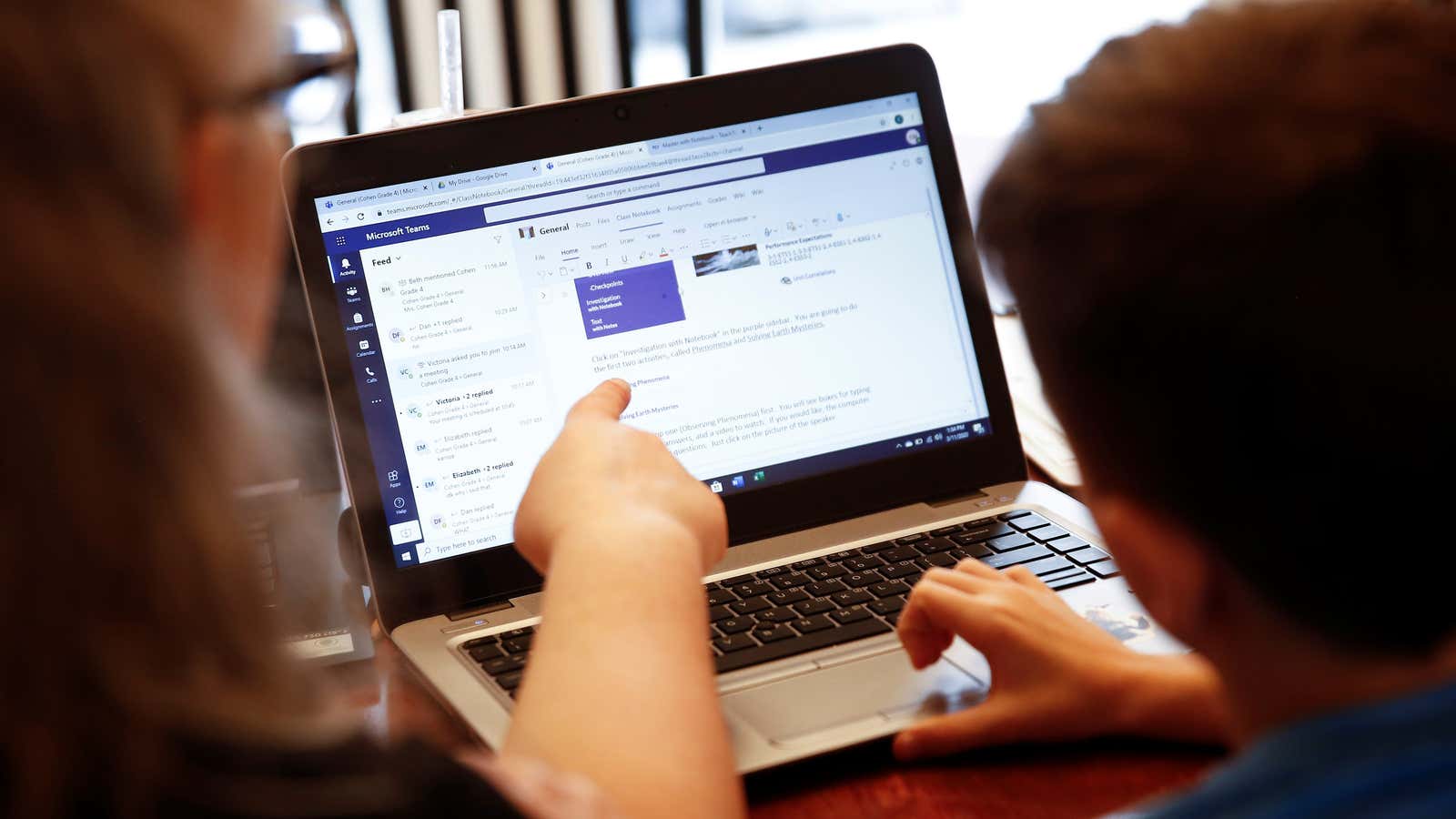Parenting through the pandemic famously put many Americans at risk of burnout.
Schools closed around the world in early 2020, leaving parents who worked outside of the home scrambling to arrange childcare. Those who found themselves working remotely for longer than anticipated struggled to stay focused on Zoom calls as their kids demanded attention or begged for technical help with an online class.
Many companies hastily created new policies and benefits, such as extra time off, to support employees with children at home, sometimes to the chagrin of their non-parent counterparts.
However, new data from the American Time Use Survey show that Americans living with children didn’t actually spend much more time on primary childcare in 2020 (1.3 hours per day) than they did in 2019 (1.2 hours). Data collection was halted due to the pandemic in March and resumed in May. So any shifts in behavior during the earliest lockdowns is not covered in these data, but the rest of the pandemic year is.
The survey released today from the Bureau of Labor Statistics categorizes primary care as anything “done as a main activity, such as providing physical care or reading to children.” Surprisingly, this also includes education-related activities. It said that childcare times hardly budged because certain activities, like picking up and dropping off kids at school or activities dropped.
The data on secondary care—time spent with a child under your care while you are busy with other things, including working, managing the household, and shopping, for instance—may feel more validating for stressed-out parents, particularly women. Here, adults in US households with at least one child under age 13 spent an average of 6.1 hours per day providing secondary childcare, an increase of one hour from the previous year.
The largest increase was seen among adults with a 6 to 12-year-old child in the house: This group dedicated an extra 1.6 hours to secondary childcare compared to 2019.
Unfortunately, traditional gender patterns also played out in the survey results. Men in households with children younger than 13 were busy with secondary childcare an average 4.9 hours per day while women were on double-duty for an average of 7.1 hours per day.
Compared to 2019, that was about 50 minutes of extra secondary care per day for men and 66 minutes of extra time for women. The gap in the total time spent parenting also partially explains why more women than men dropped out of the US workforce during the pandemic.
All of the data for the annual American Time Use Survey is self-reported.
